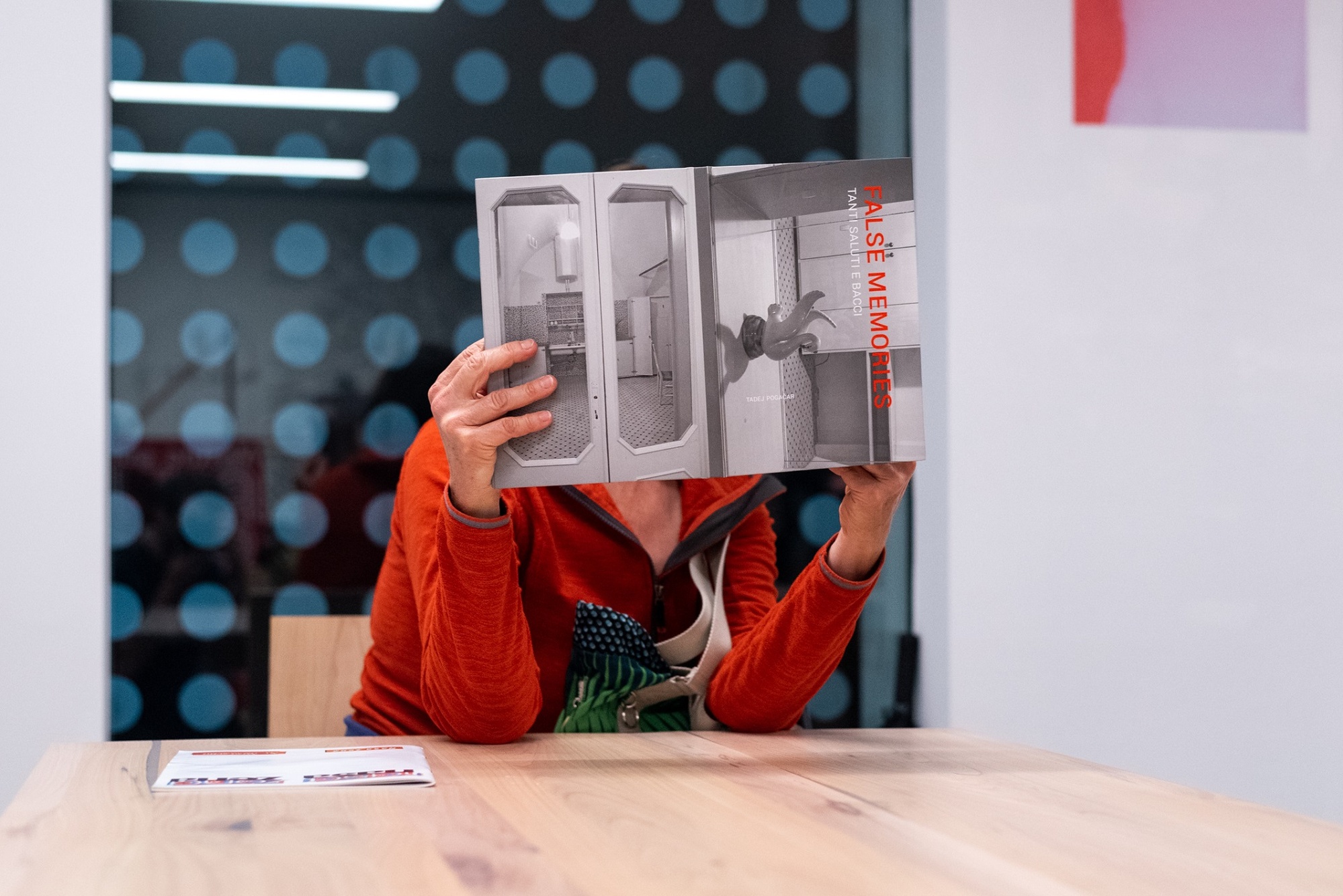P.A.R.A.S.I.T.E. Publications

We continue our Reading Room programme with art interventions and a series of talks, round table discussions, and workshops. Up to now, visitors could already explore the conceptual drawings that reflect personal thought patterns of their maker, Lia Perjovschi, and transform the structures of the Walkingstick shelves, tables, and chairs by Tobias Putrih as they have been part of the Semi-Permanent Exhibition in Cukrarna Gallery since its opening in September 2021. In May, we mark thirty years of P.A.R.A.S.I.T.E. Museum of Contemporary Art with a new exhibition, featuring a selection of posters, artist books, newspapers, and magazines created in the last three decades. Publications and printed matter have always been a vital communication medium and an indispensable means for exchange of information for the P.A.R.A.S.I.T.E. Museum.
The history of artists' books and other artists' publications made as a visual and thematic entity in the form of a book or other publication conceived by an artist and/or in collaboration with other artists, took on several lives in Slovenia in the 20th century. The first and isolated example was Red Lights by Veno Pilon before the Second World War. The transition from the 1960s to the 1970s saw the emergence of the works by the OHO group and other artists presented in the magazines Tribuna, Problemi (PU and Katalog), a decade later, an array of photocopied books appeared in the fictitious publishing house Pest, produced by Vesna Črnivec, Iztok Osojnik, Issa and Iztok Saksida Jakac and Dušan Pirih Hup, while the beginning of the 1990s set forth a more or less continuous production by artists that entered the art world at that time. The latter lives on to this day.
The works of Tadej Pogačar are included in this last life of artists' publications. Since 1994, when the artist's Journal for Anthropology and New Parasitism was created on the occasion of the exhibition The Art of History – Through the Body at the National Museum of Contemporary History of Slovenia, Pogačar has published six magazines, including the first, as many newspapers and twelve artist's books. This production has a contemporary, global character in Pogačar's work and is rooted in his other work. Thus, many publications are an integral part of his projects and exhibitions. For example, the four-part newspaper series Sex Worker and the two artist's books CODE:RED combine content from the eponymous projects in Venice in 2001, Zagreb in 2003 and Skopje in 2007, except that they are presented in the cultural norms of a newspaper or a book. In addition, artists' publications are also produced as independent works. For example, SP Files was published in 2015 on the occasion of the exhibition György Kepes, The New Landscape at Liverpool John Moores University. The piece was a kind of dis-persed art material in the form of a newspaper, as this form, with its cultural connotations, was best suited to present and actualise the work of the influential post-war American lecturer and artist György Kepes, who had cancelled his curatorship of the American pavilion at the 1969 São Paulo Biennial due to the political situation in Brazil. The newspaper standards added a dimension to Kepes' work which is ingrained in the news media in society and functions differently in society than the art objects per se.
If we refer to "deschooling", the concept of Ivan Illich that Suzana Milevska attributes to Pogačar's work The End of School, the common feature of Pogačar's artists' publications is de-art and de-artiness in the sense of reflection on the system of art and the role of the artist in it, be that in terms of content in relation to his family life, such as Twenty-eight Cakes from 2009, or on current social, anthropological and historical themes, such as Naša žena from 2018.
The extensive production of Pogačar's artists' publications, shown together for the first time at Cukrarna, also includes eleven catalogues published on the occasion of Pogačar's exhibitions and projects. It should be noted at this point that the artist included them in the exhibition not only because he was largely involved in their creation, and because some of them contain strands that can be classified as printed art, but also because the catalogues share with the artists' books, magazines and newspapers the common characteristics of the genre of publication.
Artists' publications are a form of alternative exhibition, a kind of exhibition space in the form of a book, a magazine, a newspaper and not least a catalogue. They go beyond gallery spaces and create a dispersed, uncontrolled audience. Thus, Pogačar's exhibition of artists' publications at Cukrarna is actually an exhibition of thirty-five exhibitions, also with an audience that is elsewhere.
—Lilijana Stepančič
In collaboration with Zavod P.A.R.A.S.I.T.E.
Opening hours
Tuesday to Sunday: 10.00–19.00
Tickets
Admission free